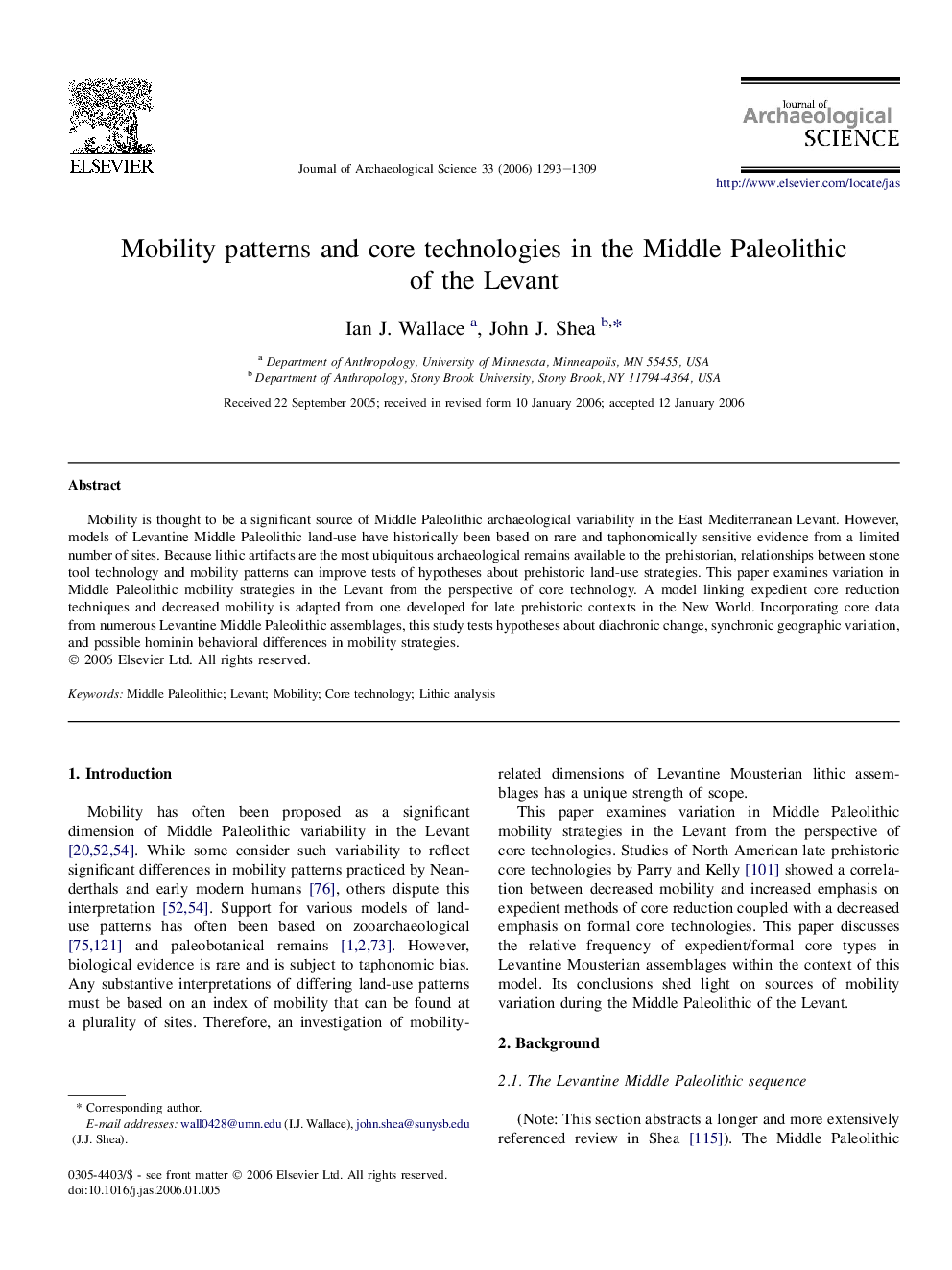| Article ID | Journal | Published Year | Pages | File Type |
|---|---|---|---|---|
| 1037558 | Journal of Archaeological Science | 2006 | 17 Pages |
Mobility is thought to be a significant source of Middle Paleolithic archaeological variability in the East Mediterranean Levant. However, models of Levantine Middle Paleolithic land-use have historically been based on rare and taphonomically sensitive evidence from a limited number of sites. Because lithic artifacts are the most ubiquitous archaeological remains available to the prehistorian, relationships between stone tool technology and mobility patterns can improve tests of hypotheses about prehistoric land-use strategies. This paper examines variation in Middle Paleolithic mobility strategies in the Levant from the perspective of core technology. A model linking expedient core reduction techniques and decreased mobility is adapted from one developed for late prehistoric contexts in the New World. Incorporating core data from numerous Levantine Middle Paleolithic assemblages, this study tests hypotheses about diachronic change, synchronic geographic variation, and possible hominin behavioral differences in mobility strategies.
